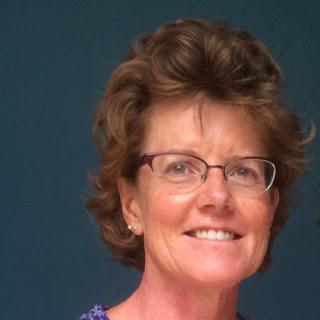
Branches with Almond Blossoms by Vincent van Gogh
One of our readers (and students) Cynthia Alleman offered to share her story with us about how yoga helped her with Lupus, an autoimmune condition where your immune system mistakes your own body tissues for foreign invaders, creating inflammation, pain, and dysfunction. So I jumped at the chance to interview her. Baxter: Cynthia, thanks so much for being willing to share your story with us. When did you get diagnosed with Lupus?
Cynthia: I was diagnosed with Systemic Lupus Erythematosus (SLE) January 2013. There must be a genetic predisposition in my family because my uncle and brother also have Lupus. The onset of my symptoms was pretty acute. Winter 2012 I experienced anxiety and depression, major fatigue, and the enigmatic joint aches—thinking maybe that's just how it is when you're 55. I was down and couldn't move. Blood tests with my general MD revealed Sjogren's Syndrome, and she referred me to a rheumatologist. While I had the symptoms, there were no blood markers for Lupus so the diagnosis was "Undifferentiated Connective Tissue Disease." But a year later, in January 2013, the markers were apparent in blood tests and the diagnosis changed to SLE.Baxter: Was there anything else going on before or during this time that you feel had an impact on your new illness?Cynthia: Stress components—I lived them. I was a single then remarried mom, working full time, going to college and then to graduate school. Going with the low level chronic stress all the time—distress! For the past 18 years I have worked as a Speech Language Pathologist in public schools, the majority in high school and junior high school. Winters, mid-school year, have always been stressful, with what I called “February Funk.” Life funk.Baxter: What happened since then? You told me that you have actually been doing very well for the last two years or so. Cynthia: That’s right. At doctor visits two and three years after the initial diagnosis (July 2015 and January 2016), I have been free of most symptoms, and the rheumatologist reports that the Lupus is not active and blood work is stable.Baxter: How do you account for this dramatic shift in your health? Cynthia: Yoga asana classes for 20+ years planted seeds. Along with the shining example of my almost 80-year old yogini mother, my family doctor opened the door to yoga by writing a prescription for it in 1993!) which led to a more consistent practice for the last four years. The last years included a year plus of yoga teacher training and almost two years of teaching one yoga class a week. Along with developing a home asana practice, a nice side benefit of teaching, learning the “Ashtanga” of yoga has been life changing!Baxter: You're referring to the eight limbs of yoga as described by Patanjali, right? Are there certain ones that have been particularly helpful? Cynthia: Yes! The core to everyday for me is dhyana (practice of meditation) which I have done daily for the last three to four years. This practice consistently leads me to the insight of two of the yamas: ahimsa (nonviolence) and satya (truthfulness). Realizing a truth that my lifestyle was killing me—literally my body was attacking itself—made me take steps to change. This included walking and not always running, and backing off of the intensity on the mat and in my many activities of life. As with many principles of yoga and meditation, I learned to turn ahimsa and satya to myself as well as to others.Baxter: What other limbs have played a part in improving your condition?Cynthia: Asana plays a huge part in my health. I feel strong and my joints are free moving. Occasionally my hips and lower back talk to me and occasionally I take Aleve. But that is the only medical treatment I use for the Lupus. I do asanas as much for my mind and heart as I do for my physical body. I think the home practice has made a difference.I have learned pranayama from the practice of asana and dhyana. Finding the breath, moving with the breath, and controlling the breath has helped with dharana (concentration) and pranayama. They both help calm the anxiety and depression.
The Ashtanga is not linear. The dhyana circles back to the yamas and niyamas. As with all the practices ,I don't have all if them—or even some of them—all the time, just glimpses. If samadhi is deep joy and peace, glimpses appear. Baxter: Speaking of the niyamas, how have those fit in? Cynthia: Spaciousness in my life comes from these niyamas:
- Saucha (cleanliness)—having the discipline and routine of daily practice.
- Santosa (contentment)—my life contains multitudes more joy and contentment than previously. Even when rough spots show up, I have the gratitude to be joyful in them
- Tapas, (zeal, heat)—my passion for life is still there and so is the self-knowledge to know it's boundaries.
- Svadhyaya (study of sacred scriptures and of self)—includes for me the zeal of study and the revealing of self that meditation (dhyana) offers.


